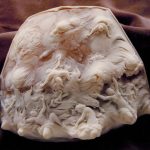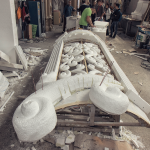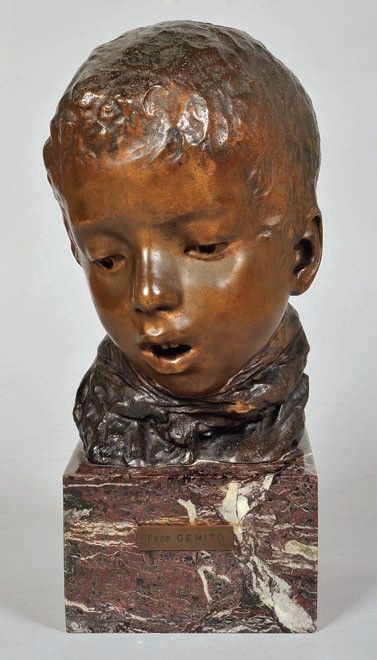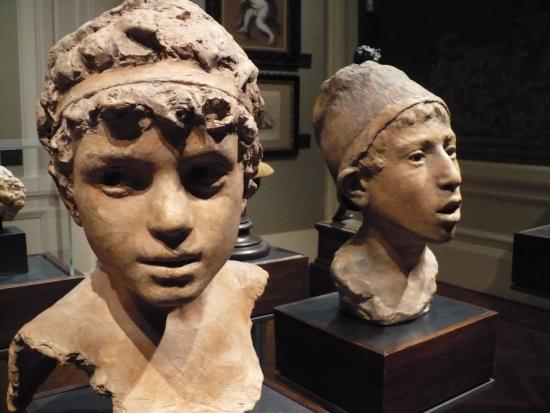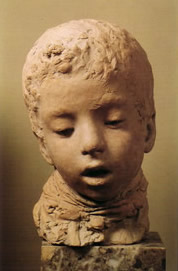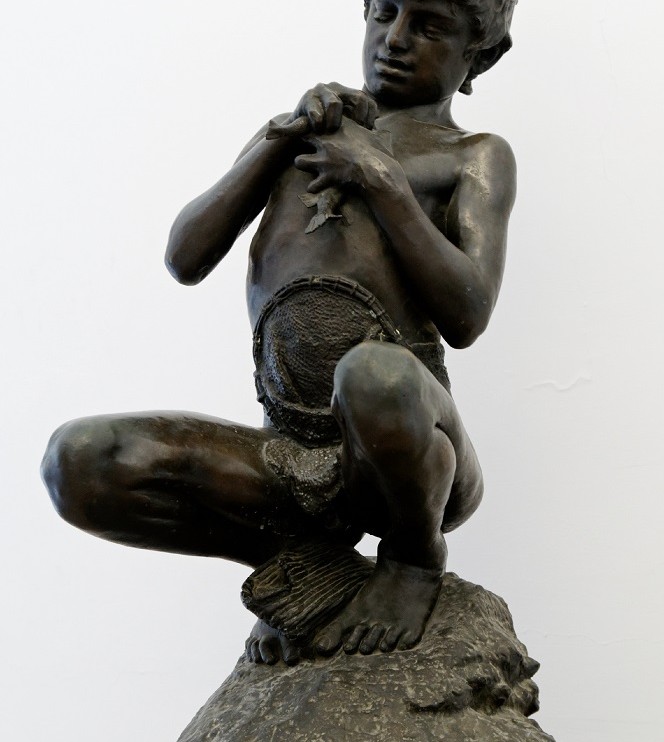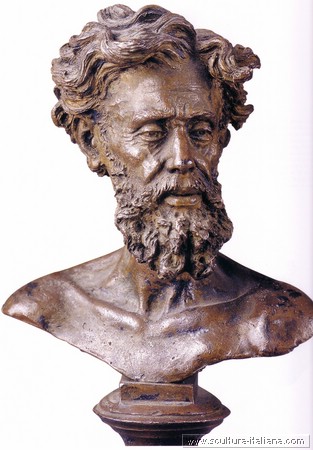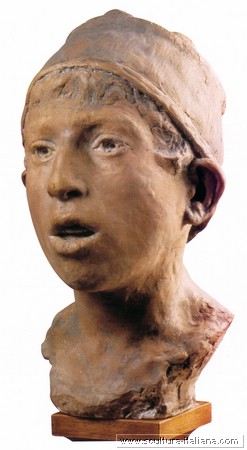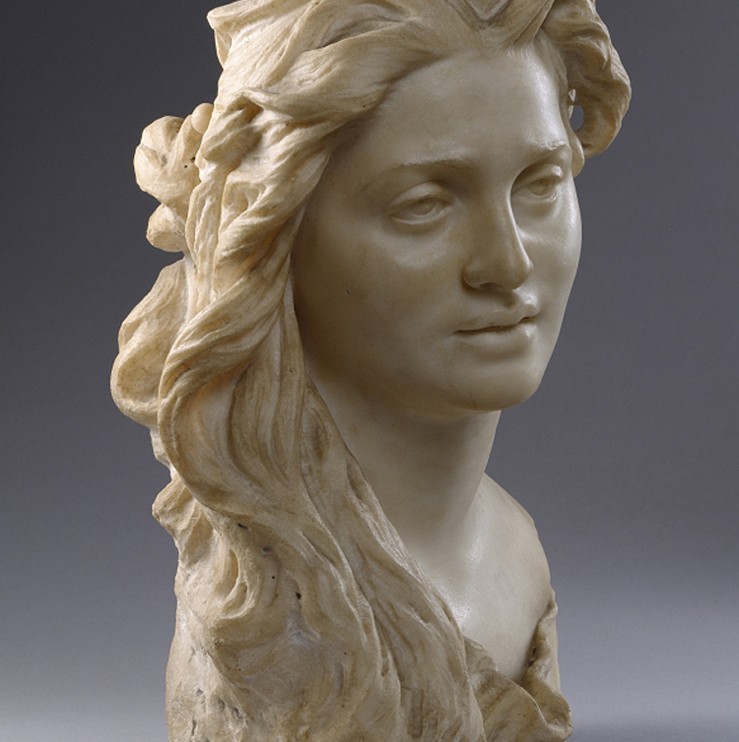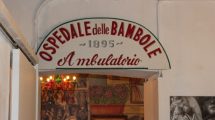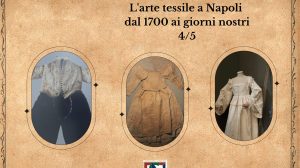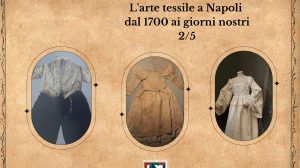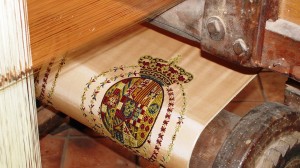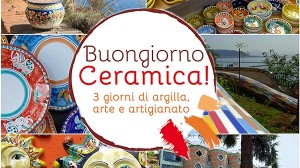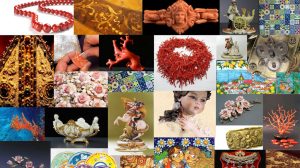The story of an artist known as the mad writer in Naples.
His life fascinated the Neapolitan poet Salvatore Di Giacomo so much that he dedicated him a book, while Gemito was still living his turbulent life.
Abandoned in the baby hatch at Annunziata’s orphanage, he was taken in and given the name of Gemino, literally ‘begotten’, a name usually given to all orphans. Yet, by the happy slip of the orphanage recorder’s pen, its name became Gemito, ‘moan’, the same pain which later on will mark his creations.
Born of the common people, he will look at the world of his Naples representing it through forms disguised of Classsicism.
A very enterprising person, he soon proposed himself as an apprentice to the major master artisans in Naples. So, he early found work as an apprentice in the studio of painter and sculptor Emanuele Cangiano in order to learn the art of sculpture. He also gave start to his early studies with the young Antonio Mancini.
People thought he was as ‘possessed’. Gemito painted a lively and feverish Naples with its slums and ‘scugnizzi’ (rascals), capturing all its living forms: the narrow streets, the ‘nakedness’, the ‘scugnizzi’ are as if impressed into the wax, the terracotta and bronze, acquiring a soul and a heart (“anima e cor” in Neapolitan).
Gemito could gather the real moans of his Naples into that Neapolitan spirit made up of ‘misery and nobility’ and could mix them in new and classical forms, making them unique in their contrast of essence: classical but Neapolitan at the same time.
He studied Classicism through the Bronzes in Ercolano, trying to draw upon their nobility of forms to which he gave a strong realistic trait: the ‘scugnizzi’ are so lively, nervous and natural; in his ‘pescatorelli’ the typical Hellenistic forms live side by side with the Neapolitan world. A new and harmonious hybrid! His lines are nervous, often interrupted, full of despair.
Vincenzo faced up to reality, impressing it as it really was, with no pretension, as Gemito wanted to discover the real face of Naples, far from the myths and nobility. It was just there that he found a hidden beauty, crowded with women commoners, nurturers, fishermen, undressed children having no name, as he himself was; all reproduced the way they were, the way Gemito looked at them and secured in eternal forms.
The world was cruel according to him but art saved and rescued him through an authentic and honest beauty.
Hence he started gaining his first acknowledgements: he ranked among the top nine places at Royal Art Institute, while in 1868 his Giocatore in Terracotta was purchased by Vittorio Emanuele II for the Palace of Capodimonte.
He was then assigned the task of creating the statue of Charles V in the foundry he had opened in Naples, to be placed on the facade of the Royal Palace; yet, Gemito hated the marble, it was not congenial to him as he found it not very malleable to his ardently hands. Thus, seized with a fit of madness, being not satisfied with his creation, he hit at the statue with stones.
He thus started a life of violent passions. His first strong passion was Art, the second was Love: he met and married a Neapolitan model he obsessively and also diabolically depicted up to delirium.
He was given a room into the Royal Palace of Naples: here however he started having visions of ghosts, shadows chasing him to steal the material of his art. These painful and irrational suspicions led him to insanity and then to mental hospital from where he escaped to shut himself up into his residence for 18 years to create his forms. In the meantime, the myth of the artist, damned by his own art, his reason for living, expanded.
He eventually devoted the last phase of his artistic production to goldsmith’s arts, creating golden and silver objects endowed with an exceptional beauty, elegance and refinement, and an often symbolic value.
He died in the Laganà Foundry. While ultimating a creation, hit by heat of fusion, he was taken ill suddenly. It was March 1, 1929.





